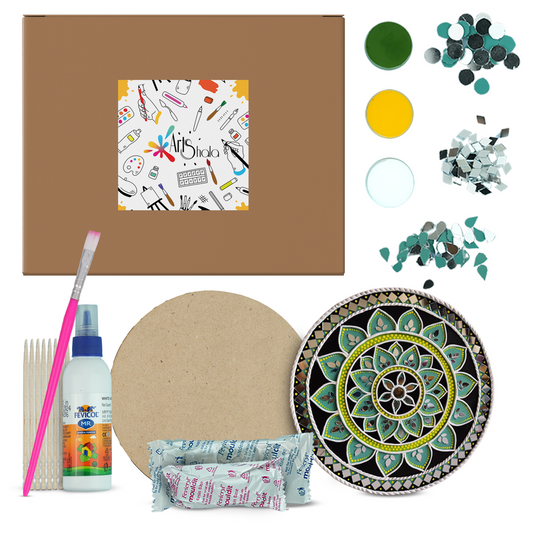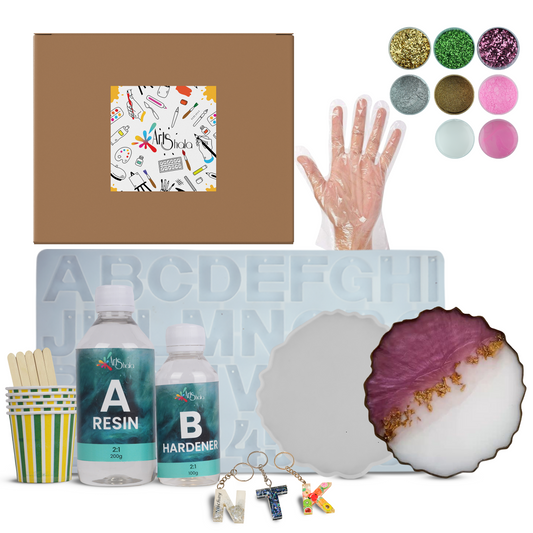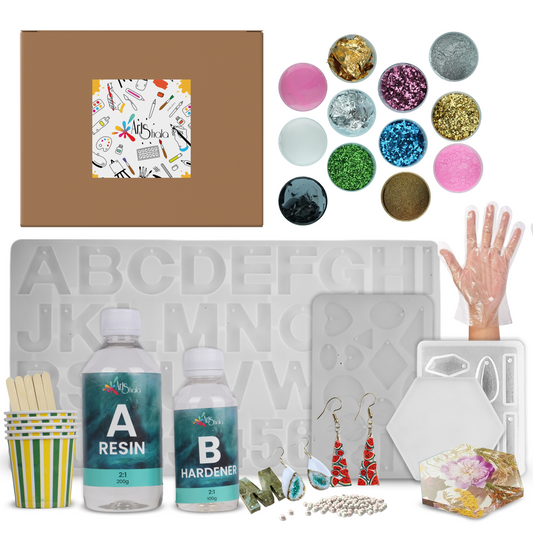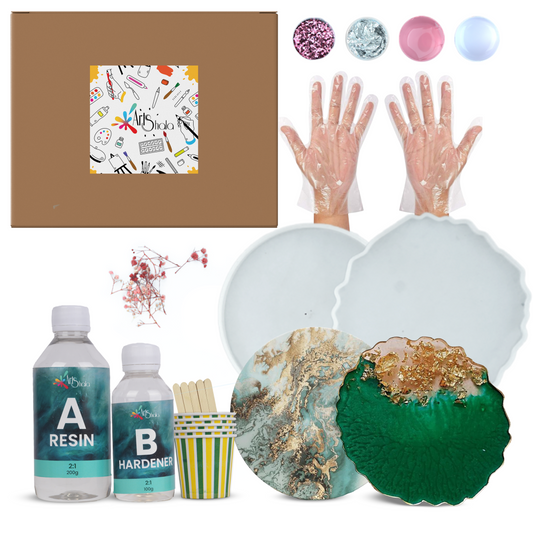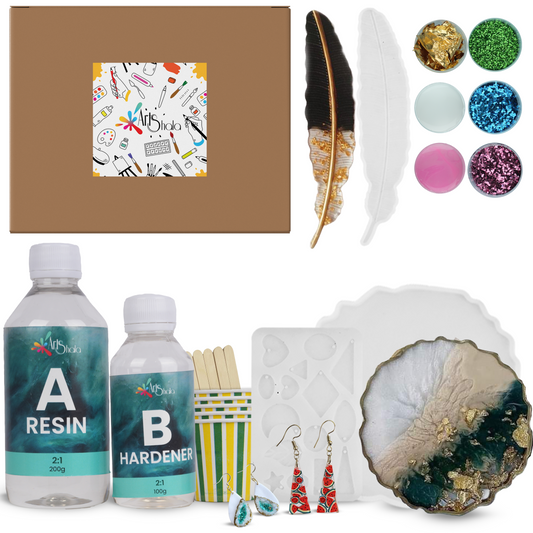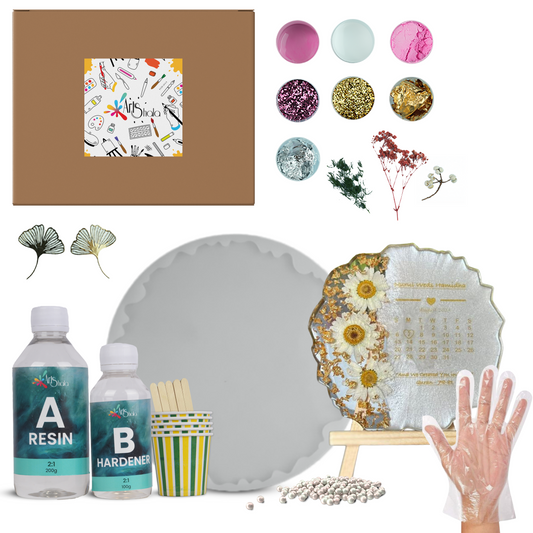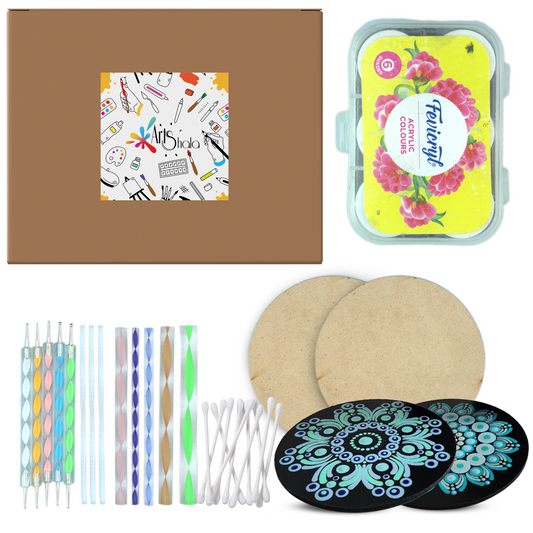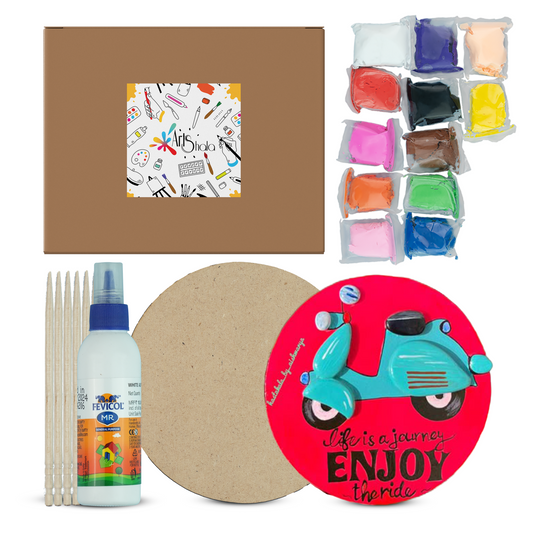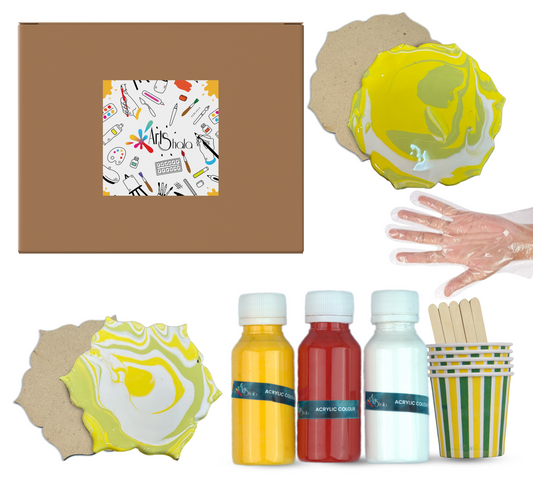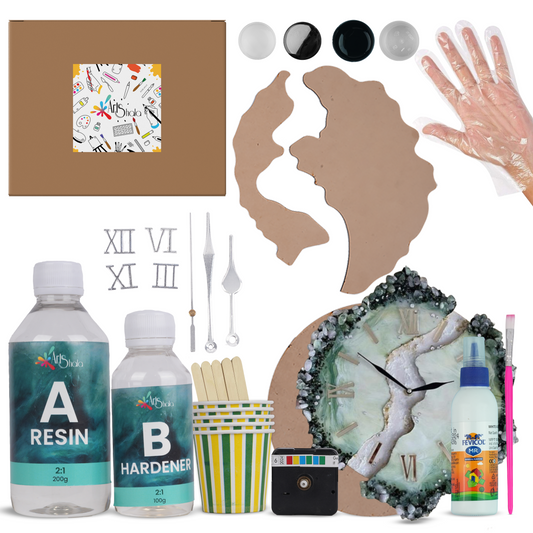Can I Mix Acrylic Paint and Poster Paint Together?
Acrylic paint and poster paint are two common types of paint used in various art projects. Understanding whether these two paints can be mixed together is important for artists experimenting with different colours and techniques. Some people believe that mixing acrylic paint with poster paint will result in a muddy or dull colour. However, with the right techniques and understanding of colour theory, it is possible to achieve vibrant and harmonious results when combining these two types of paint.
Joining an acrylic painting workshop can be a great way to gain experience in mixing different types of paints together. Not only will you learn about the properties of various paints, but you will also have the opportunity to practice mixing colours and creating unique artwork. In this blog, we will learn about the compatibility between acrylic and poster paint and the techniques for effectively combining them. So, let's get started!
Understanding Acrylic Paint
Acrylic paint is a versatile and commonly used medium in the world of art. It offers a range of characteristics and properties that make it a popular choice for artists. Here are some key points to understand about acrylic paint:
1. Overview of Acrylic Paint
Acrylic paint consists of pigments dissolved in an acrylic polymer emulsion. It is available in various colours, from opaque to translucent, allowing artists to achieve multiple effects in their artwork.
2. Quick-Drying Nature
One notable feature of acrylic paint is its quick-drying nature. Compared to oil paints, which can take days or weeks to dry, acrylics dry relatively quickly. This makes them ideal for artists who prefer working with shorter drying times or layering colours without waiting for extended periods.
3. Permanent and Durable Finish
Acrylic paint forms a permanent and durable finish when it dries. Once dry, it becomes water-resistant and resistant to fading over time. This quality ensures that artworks created with acrylics have long-lasting beauty and can withstand the test of time.
The quick-drying nature and permanent finish of acrylic paint make it perfect for a wide range of applications, including:
- Canvas paintings
- Murals
- Crafts
- Mixed media art
Understanding Poster Paint
Poster paint is water-based paint known for its vibrant colours and versatility. Here are some key points to understand about poster paint:
1. Overview of Poster Paint
Poster paint, also known as tempera paint, is a water-based paint popular among artists. It is used to create posters, artworks, and crafts. It is known for its opaque coverage and quick drying time.
2. Water-Based Nature of Poster Paint
Poster paint is water-soluble, making it easy to clean up with water. It is also non-toxic, which makes it suitable for use in educational settings and by young artists.
3. Versatility and Vibrant Colours of Poster Paint
Poster paint come in a wide variety of vibrant colours, allowing artists to create bold and eye-catching artwork. Its versatility makes it suitable for various techniques such as layering, blending, and creating textures.
With its water-based nature and vivid colour options, poster paint allows artists to explore different possibilities.
Compatibility Between Acrylic Paint and Poster Paint
When it comes to mixing acrylic and poster paints, it's essential to understand the compatibility between them. Here are some key points to consider:
- Compatibility: Acrylic paint is known for its quick-drying and durable nature, while poster paint is water-based and offers vibrant colours. Despite their different characteristics, they can be mixed together to create unique shades and textures in artwork.
- Factors to consider: When mixing acrylic and poster paints, consider the properties of each type, such as drying time and opacity. Additionally, consider the artwork's desired finish and longevity, as acrylic paint tends to have a more permanent quality than poster paint.
- Possible issues: While acrylic and poster paints can be mixed, some problems may arise, such as colour shifts due to variations in pigment concentration. To ensure the desired result, it is essential to test the mixture on a small scale before applying it to a larger artwork.
Techniques for Mixing Acrylic Paint and Poster Paint
While mixing acrylic paint and poster paint, there are several techniques you can use to achieve the desired results. Here are three popular methods:
1. Gradual Mixing
The gradual mixing technique involves blending acrylic and poster paints together gradually, starting with small amounts of each colour. This method gives you better control over the colour outcome and ensures a consistent blend throughout your artwork. Here's a step-by-step process for gradually mixing the two paints:
- Start by selecting the colours you want to mix. It's best to choose colours that are similar in hue or those that will create an exciting blend when combined.
- Begin with a small amount of each paint on your palette. Use a palette knife or a paint brush to mix the paints together, starting with gentle strokes.
- Gradually increase the amount of paint as you go along, adjusting the ratio of acrylic and poster paints to achieve the desired shade.
- Continue blending until you achieve a smooth, even colour. Take your time during this process to ensure no streaks or clumps.
2. Layering Technique
The layering technique uses acrylic and poster paints to build layers of different colours. This method allows you to create your artwork's depth, texture, and dimension. To use the layering technique:
- Start with a base layer of one paint colour on your canvas or paper.
- Allow the base layer to dry properly before moving on to the next step. This will prevent the colours from blending together too much.
- Use a painting brush or palette knife to apply another layer of a different colour on top of the base layer. You can experiment with unique brush strokes to create interesting textures.
- Repeat the process of layering and allowing each layer to dry before adding the next colour. This will help you create the desired depth and complexity in your artwork.
3. Creating Textures
Mixing acrylic paint and poster paint also allows you to create unique textures in your artwork. You can use various tools and techniques to achieve different textures with mixed paints. Here are some ideas for creating textures:
- Use a sponge or cloth to dab the mixed paints onto your canvas, creating a stippled effect.
- To add texture to your artwork, experiment with different brush strokes, such as stippling, cross-hatching, or scumbling.
- Use palette knives or other unconventional tools to apply the mixed paints, creating interesting patterns and textures.
- Layer the mixed paints thickly onto your canvas and use a comb or toothpick to create lines or grooves.
Conclusion
Mixing acrylic and poster paint opens up a world of possibilities for artists. Don't be afraid to experiment with different colour shades and textures. Enjoy the creative process, and let your imagination guide you. Through trial and error, you'll discover unique effects that can enhance your artwork.
If you want to expand your knowledge and skills in mixing acrylic paint and poster paint, Contact Us on Arts Shala today where expert instructors will guide you through several techniques and provide valuable insights into the world of painting. Unlock your artistic potential and take your artwork to the next level. Remember, mixing different types of paints can be a fun and rewarding experience. So, grab your brushes, mix those colours, and let your creativity shine!



